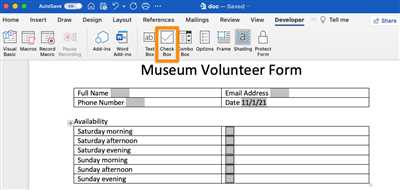
Forms are commonly used on websites to collect information from users. Whether you want to create a registration form, collect customer feedback, or gather data for a survey, forms can be a great tool. In this article, we will give you step-by-step instructions on how to create a form using HTML.
The first step is to open your HTML editor and start a new document. You can use any text editor or a specialized HTML editor if you prefer. Give your document a name and save it with the .html extension.
Next, you will need to define the form using the









